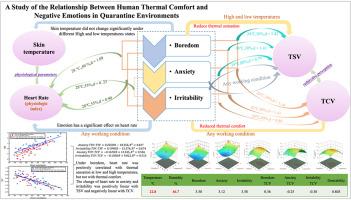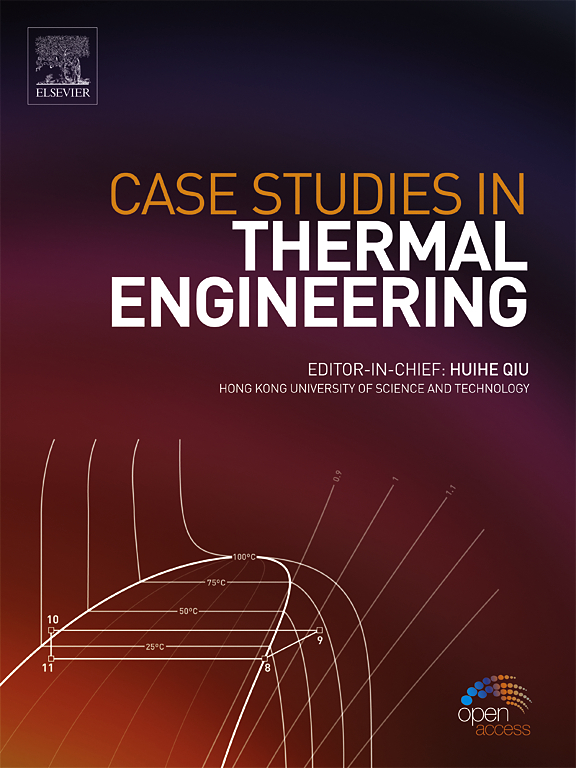隔离环境中人体热舒适度与负面情绪之间关系的研究
IF 6.4
2区 工程技术
Q1 THERMODYNAMICS
引用次数: 0
摘要
热环境与情绪密切相关。热环境会影响情绪体验,并能通过调整参数增强情绪体验。本研究在受控环境中研究了三种常见的负面情绪--烦恼、焦虑和烦躁。我们通过实验研究了在不同的温度和湿度条件下,这些情绪如何影响热感觉、热舒适度和生理参数。结果表明,在中高湿度条件下,情绪会明显影响热感觉(TSV)和热舒适度(TCV),这说明了温度和湿度如何调节情绪与热舒适度之间的关系。生理参数的变化进一步揭示了情绪与环境条件之间的相互作用如何影响生理反应。利用响应面法建立了一个回归模型,分析了不同情绪下温度和湿度与热舒适度的关系,确定了最佳室内条件为 22.8 °C、46.7 % 湿度。这些发现有助于减少负面情绪,改善热舒适度,加深我们对人体热舒适度的理解,并为在公共卫生突发事件中管理负面情绪提供科学指导。本文章由计算机程序翻译,如有差异,请以英文原文为准。

A study of the relationship between human thermal comfort and negative emotions in quarantine environments
The thermal environment is closely related to emotion. The thermal environment affects emotional experiences and can enhance them by adjusting its parameters. This study examines three common negative emotions—boredom, anxiety, and irritability—in a controlled environment. We experimentally investigated how these emotions affect thermal sensation, thermal comfort, and physiological parameters under varying temperature and humidity conditions. Results indicated that emotions significantly influenced thermal sensation (TSV) and thermal comfort (TCV) under moderate to high humidity conditions, demonstrating how temperature and humidity moderate the relationship between emotion and thermal comfort. Changes in physiological parameters further reveal how the interaction between emotion and environmental conditions affects physiological responses. A regression model was created using the response surface method to analyze thermal comfort in relation to temperature and humidity under different emotions, identifying the optimal indoor conditions as 22.8 °C and 46.7 % humidity. These findings help reduce negative emotions, improve thermal comfort, enhance our understanding of human thermal comfort, and provide scientific guidance for managing negative emotions during public health emergencies.
求助全文
通过发布文献求助,成功后即可免费获取论文全文。
去求助
来源期刊

Case Studies in Thermal Engineering
Chemical Engineering-Fluid Flow and Transfer Processes
CiteScore
8.60
自引率
11.80%
发文量
812
审稿时长
76 days
期刊介绍:
Case Studies in Thermal Engineering provides a forum for the rapid publication of short, structured Case Studies in Thermal Engineering and related Short Communications. It provides an essential compendium of case studies for researchers and practitioners in the field of thermal engineering and others who are interested in aspects of thermal engineering cases that could affect other engineering processes. The journal not only publishes new and novel case studies, but also provides a forum for the publication of high quality descriptions of classic thermal engineering problems. The scope of the journal includes case studies of thermal engineering problems in components, devices and systems using existing experimental and numerical techniques in the areas of mechanical, aerospace, chemical, medical, thermal management for electronics, heat exchangers, regeneration, solar thermal energy, thermal storage, building energy conservation, and power generation. Case studies of thermal problems in other areas will also be considered.
 求助内容:
求助内容: 应助结果提醒方式:
应助结果提醒方式:


